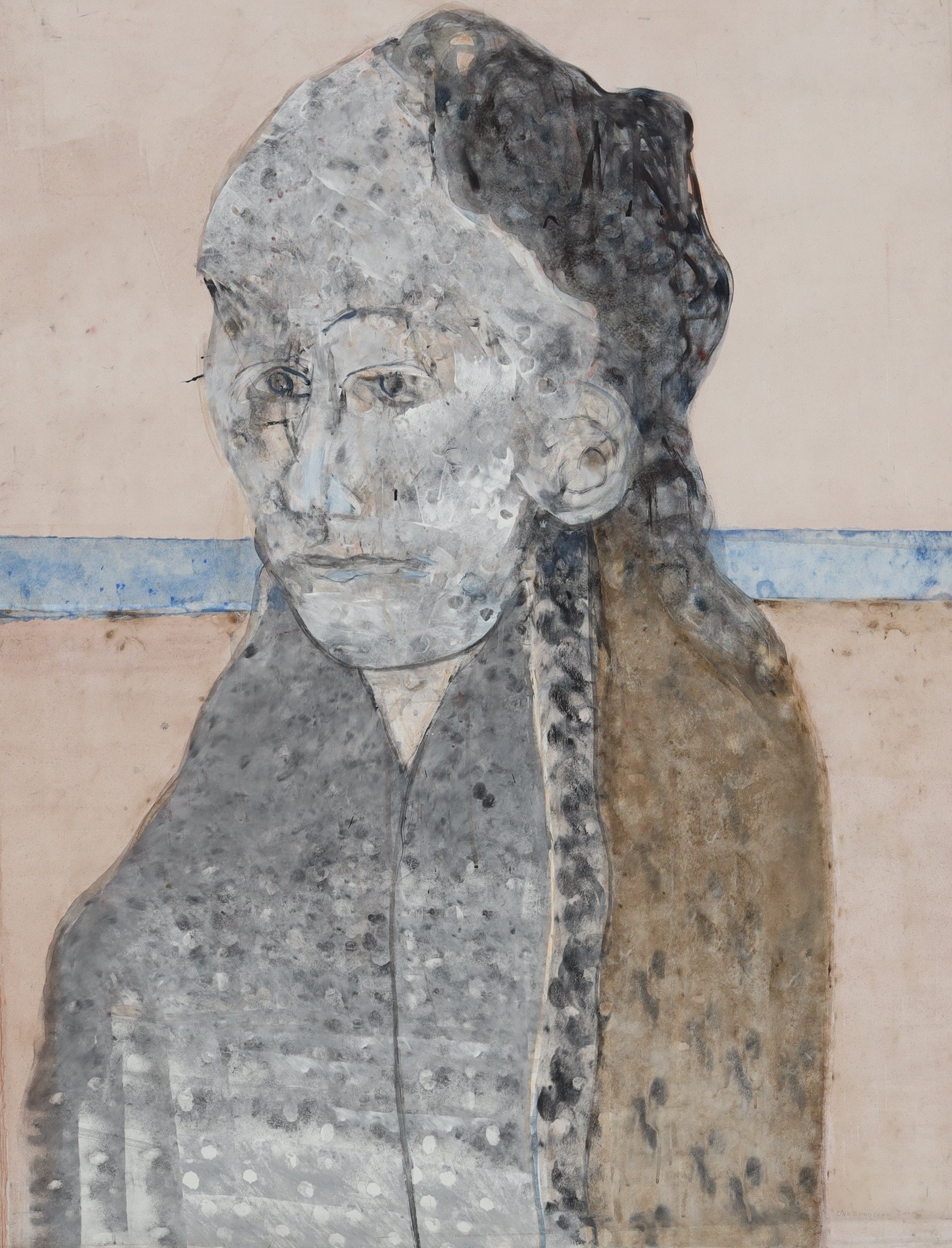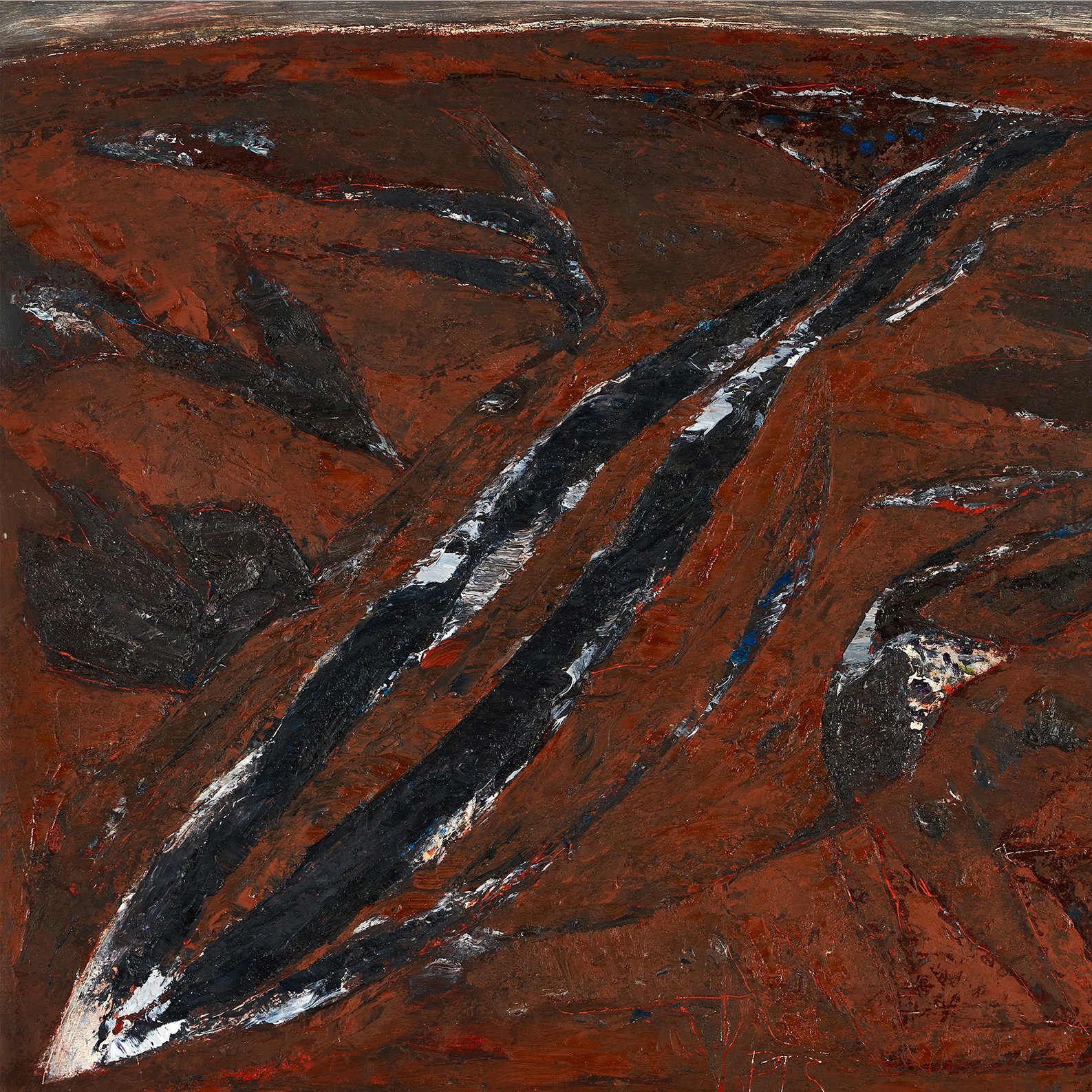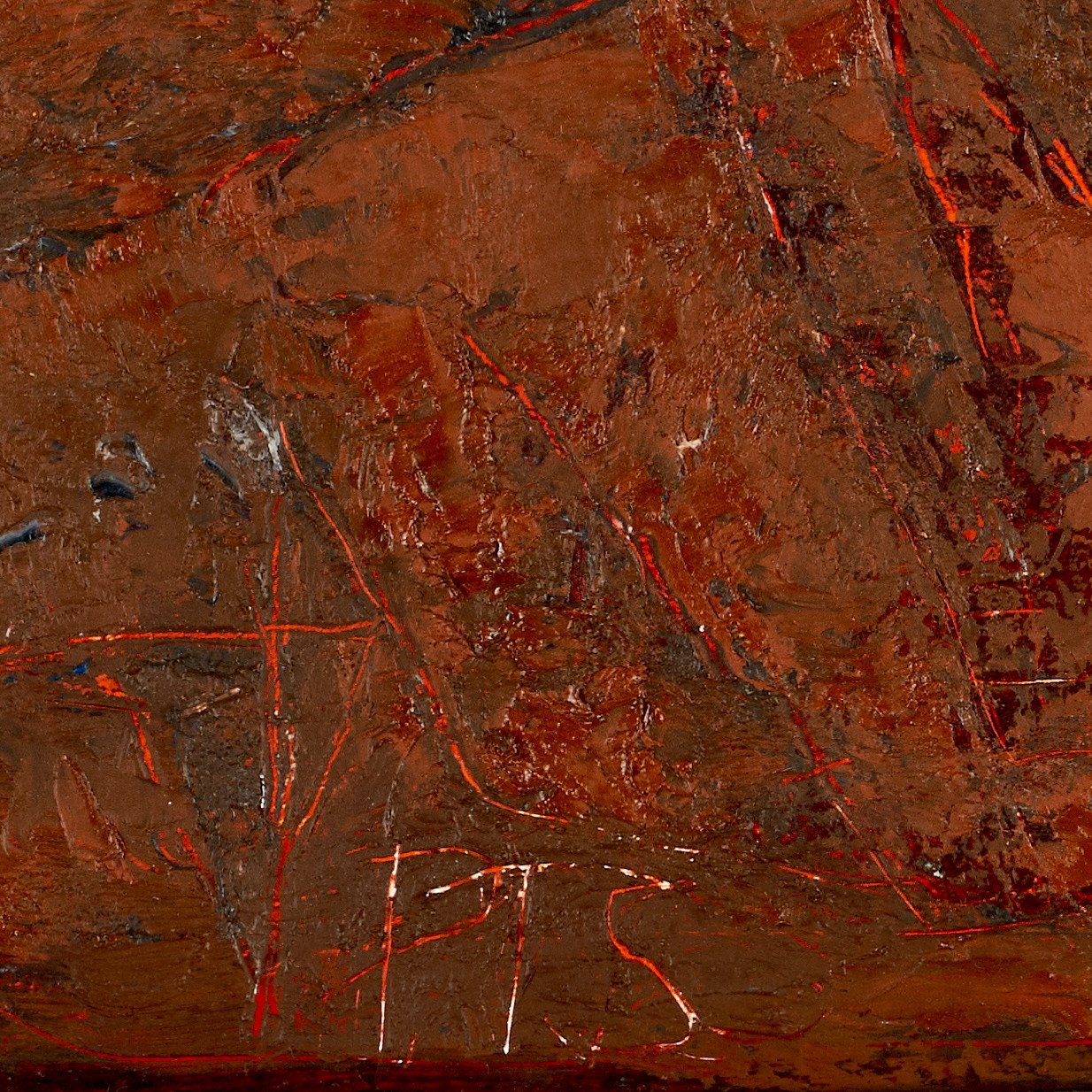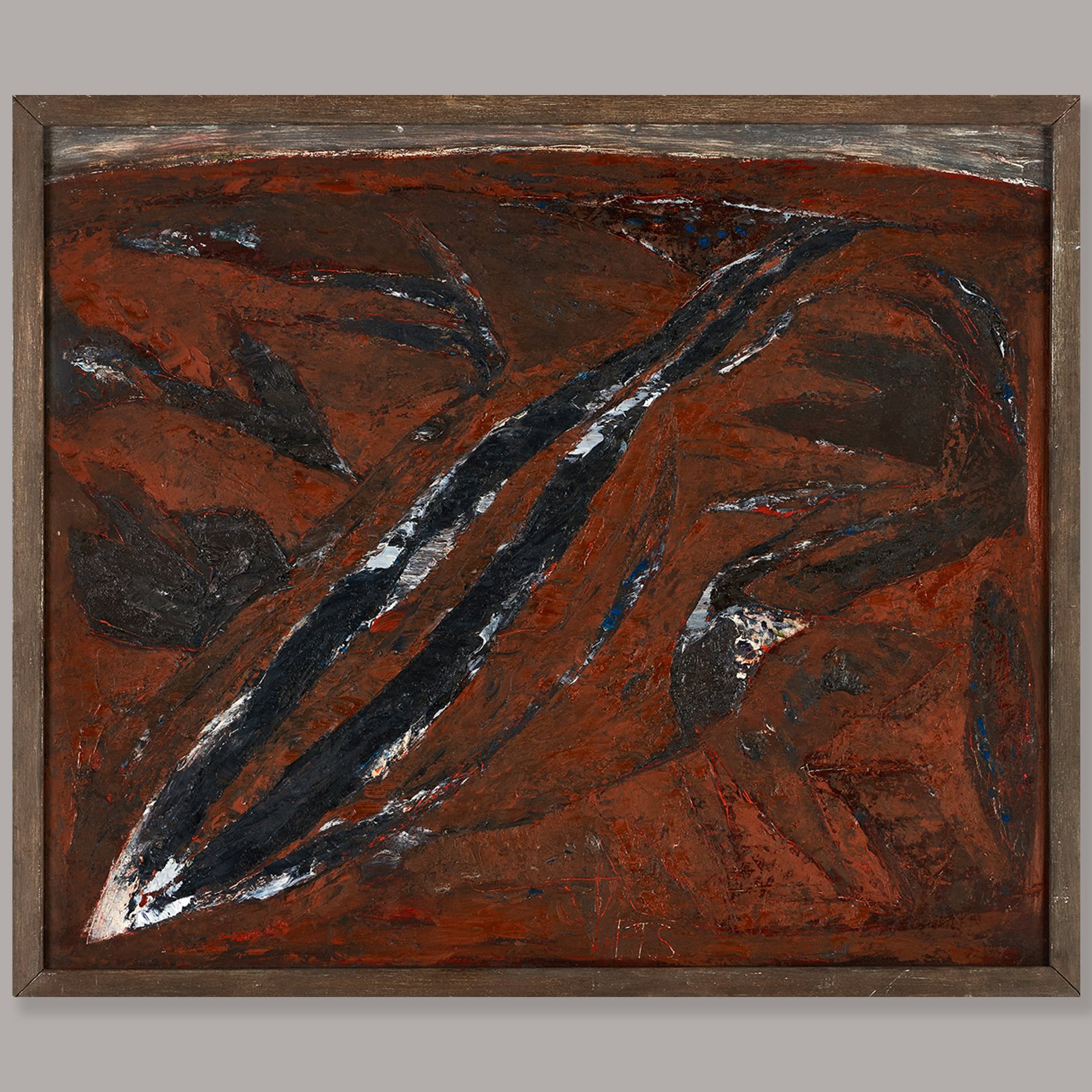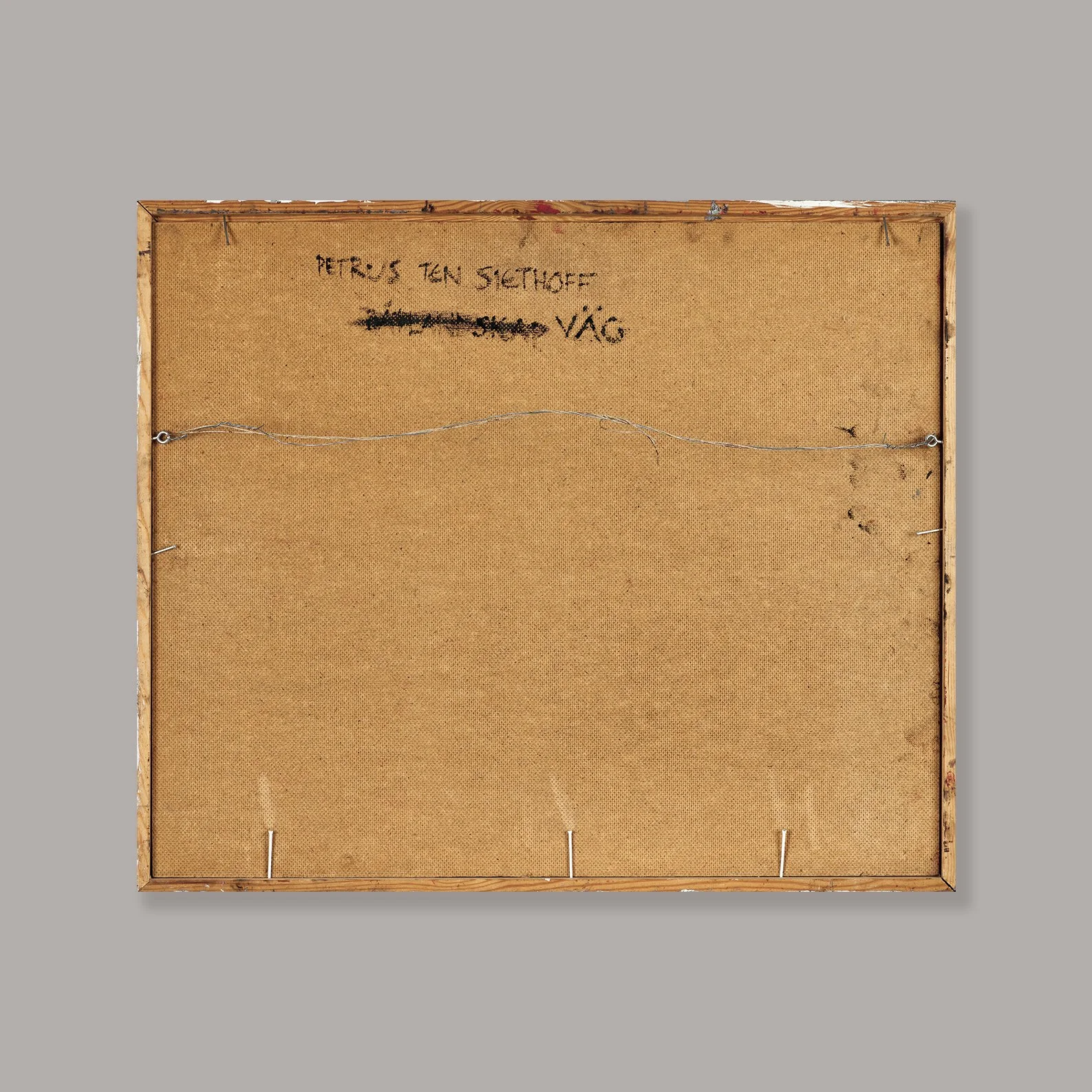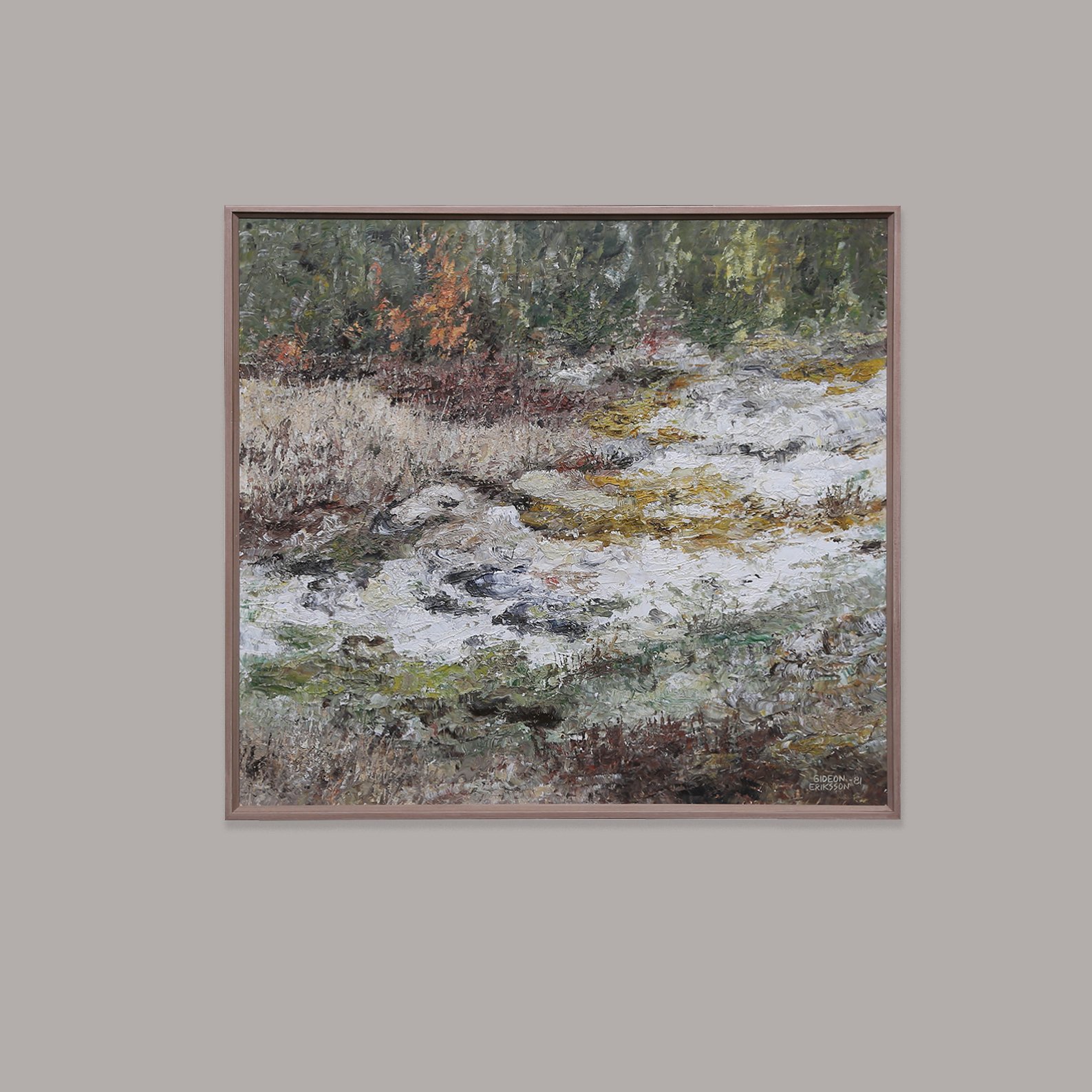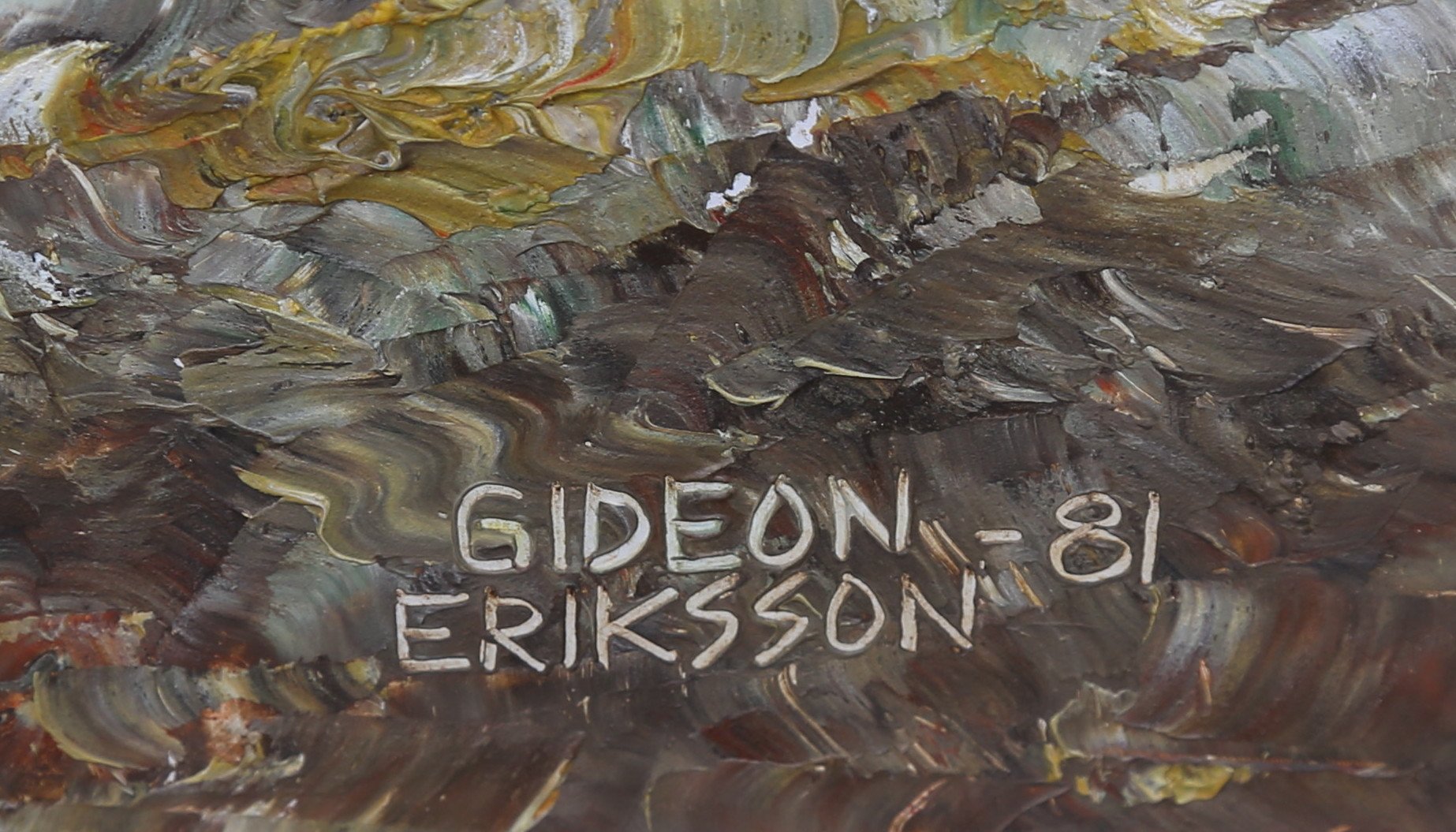Three Women by Adam Kastrati (1930-2000)
Adem Kastrati (1930-2000), 'Three Women', mixed media on canvas, signed and framed.
Adem Kastrati belongs to the first generation of post-war figurative artists who lived and created works in Yugoslavia. Kastrati is one of the doyens among Albanian painters in North Macedonia, the country where he lived and created for more than forty years.
Kastrati was born in 1933 in the village of Karačevë in Dardana, Kosovo, in a large generous family, with patriotic and education-loving activities. His family was known from his father on this side, but also from his mother's side from Dajkoci (his uncle was the political dissident and patriot Metush Krasniqi). Painter and teacher of figurative art, literary creator, collector , the marker and publisher of the popular treasure, the analyst of Albanian-Slavic and Euro-world relations. The stormy times in which he grew, matured and formed as a painter left a big mark on his artistic practice.
There is almost no motif from traditional figurative iconography that is not found in the creativity of the painter, Adem Kastrati. Just as he used a variety of different themes, he also worked with the materialization of those themes through certain motifs, which are present in almost all of his creativity. Themes represent the visual forms of thematic content. He painted most of the motifs according to the models of traditional figurative iconography, starting from landscape, interior, portrait, self-portrait, act, still life, animalism, architecture, caricatures, etc., thus leaving a rich opus of works with aesthetic values , but also with documentary visual significance.
Kastrati's paintings, based on the tradition of realist mimeticism, present direct sequences of the human figure and the animalistic world, often in harmony with their similarities and visual illusions. Starting from the context of the institutional mission of painting, Kastrati used the possibilities of this figurative genre as a social practice of exchange and interpretation of image values, which come as real performances or as visual constructions. His paintings, as a complex presentation system, through a sensitive-emergent discourse sets in motion the practices of production, presentation, acceptance, consumption and interpretation of two-dimensional surfaces in function of the visual representation of the real or imaginary world.
NOTE: available w/c 18 November 2024
Artist: Adem Kastrati (1930-2000)
Medium: Oil on canvas
Origin: North Macedonia
Period: Unknown
Dimensions: Canvas size: 65 x 54 cm, Frame size: 80 x 69 cm
Condition: Vintage condition, partially craquele and slight abrasion of paint
Adem Kastrati (1930-2000), 'Three Women', mixed media on canvas, signed and framed.
Adem Kastrati belongs to the first generation of post-war figurative artists who lived and created works in Yugoslavia. Kastrati is one of the doyens among Albanian painters in North Macedonia, the country where he lived and created for more than forty years.
Kastrati was born in 1933 in the village of Karačevë in Dardana, Kosovo, in a large generous family, with patriotic and education-loving activities. His family was known from his father on this side, but also from his mother's side from Dajkoci (his uncle was the political dissident and patriot Metush Krasniqi). Painter and teacher of figurative art, literary creator, collector , the marker and publisher of the popular treasure, the analyst of Albanian-Slavic and Euro-world relations. The stormy times in which he grew, matured and formed as a painter left a big mark on his artistic practice.
There is almost no motif from traditional figurative iconography that is not found in the creativity of the painter, Adem Kastrati. Just as he used a variety of different themes, he also worked with the materialization of those themes through certain motifs, which are present in almost all of his creativity. Themes represent the visual forms of thematic content. He painted most of the motifs according to the models of traditional figurative iconography, starting from landscape, interior, portrait, self-portrait, act, still life, animalism, architecture, caricatures, etc., thus leaving a rich opus of works with aesthetic values , but also with documentary visual significance.
Kastrati's paintings, based on the tradition of realist mimeticism, present direct sequences of the human figure and the animalistic world, often in harmony with their similarities and visual illusions. Starting from the context of the institutional mission of painting, Kastrati used the possibilities of this figurative genre as a social practice of exchange and interpretation of image values, which come as real performances or as visual constructions. His paintings, as a complex presentation system, through a sensitive-emergent discourse sets in motion the practices of production, presentation, acceptance, consumption and interpretation of two-dimensional surfaces in function of the visual representation of the real or imaginary world.
NOTE: available w/c 18 November 2024
Artist: Adem Kastrati (1930-2000)
Medium: Oil on canvas
Origin: North Macedonia
Period: Unknown
Dimensions: Canvas size: 65 x 54 cm, Frame size: 80 x 69 cm
Condition: Vintage condition, partially craquele and slight abrasion of paint
Adem Kastrati (1930-2000), 'Three Women', mixed media on canvas, signed and framed.
Adem Kastrati belongs to the first generation of post-war figurative artists who lived and created works in Yugoslavia. Kastrati is one of the doyens among Albanian painters in North Macedonia, the country where he lived and created for more than forty years.
Kastrati was born in 1933 in the village of Karačevë in Dardana, Kosovo, in a large generous family, with patriotic and education-loving activities. His family was known from his father on this side, but also from his mother's side from Dajkoci (his uncle was the political dissident and patriot Metush Krasniqi). Painter and teacher of figurative art, literary creator, collector , the marker and publisher of the popular treasure, the analyst of Albanian-Slavic and Euro-world relations. The stormy times in which he grew, matured and formed as a painter left a big mark on his artistic practice.
There is almost no motif from traditional figurative iconography that is not found in the creativity of the painter, Adem Kastrati. Just as he used a variety of different themes, he also worked with the materialization of those themes through certain motifs, which are present in almost all of his creativity. Themes represent the visual forms of thematic content. He painted most of the motifs according to the models of traditional figurative iconography, starting from landscape, interior, portrait, self-portrait, act, still life, animalism, architecture, caricatures, etc., thus leaving a rich opus of works with aesthetic values , but also with documentary visual significance.
Kastrati's paintings, based on the tradition of realist mimeticism, present direct sequences of the human figure and the animalistic world, often in harmony with their similarities and visual illusions. Starting from the context of the institutional mission of painting, Kastrati used the possibilities of this figurative genre as a social practice of exchange and interpretation of image values, which come as real performances or as visual constructions. His paintings, as a complex presentation system, through a sensitive-emergent discourse sets in motion the practices of production, presentation, acceptance, consumption and interpretation of two-dimensional surfaces in function of the visual representation of the real or imaginary world.
NOTE: available w/c 18 November 2024
Artist: Adem Kastrati (1930-2000)
Medium: Oil on canvas
Origin: North Macedonia
Period: Unknown
Dimensions: Canvas size: 65 x 54 cm, Frame size: 80 x 69 cm
Condition: Vintage condition, partially craquele and slight abrasion of paint







